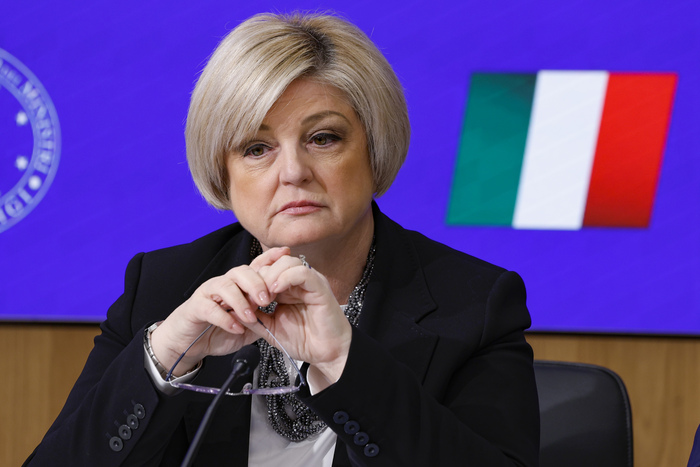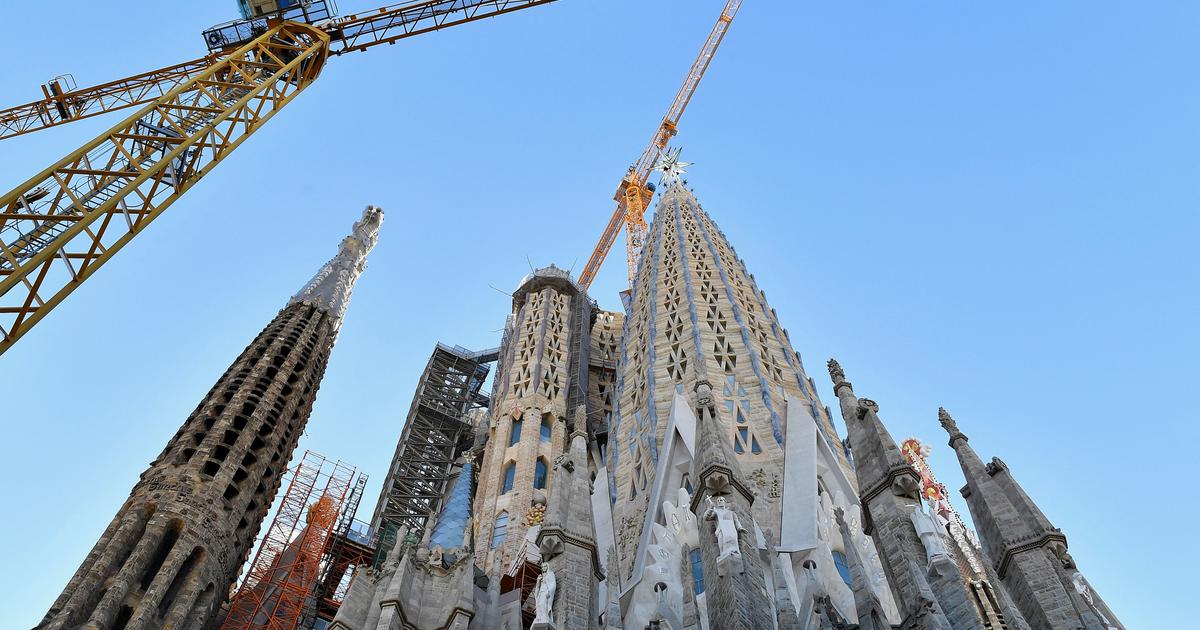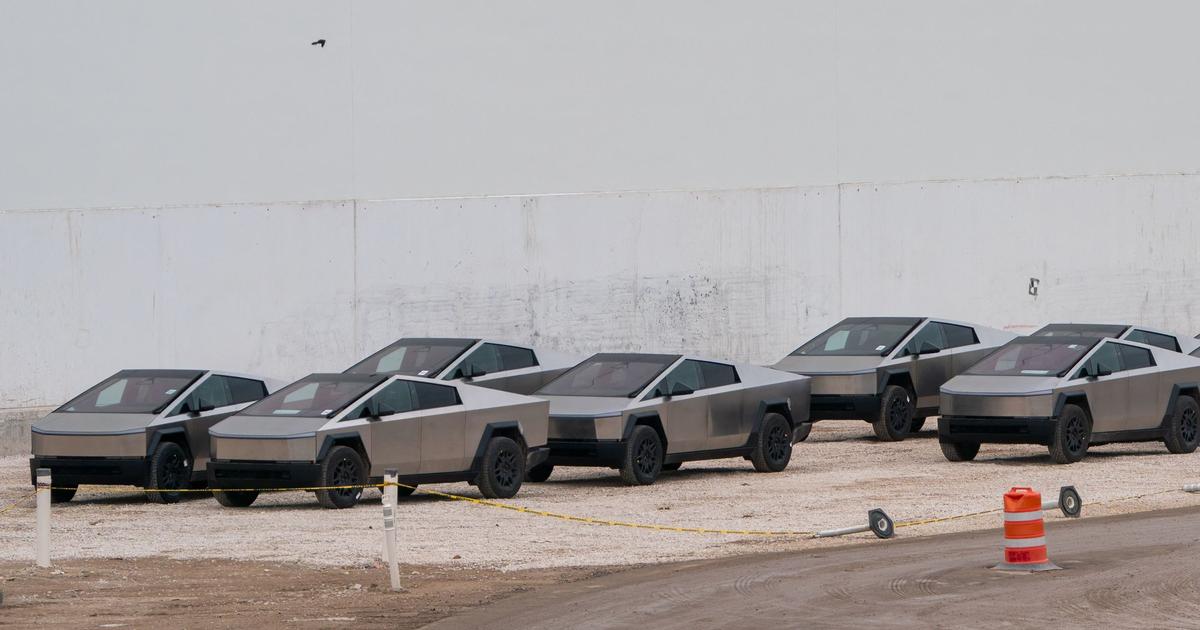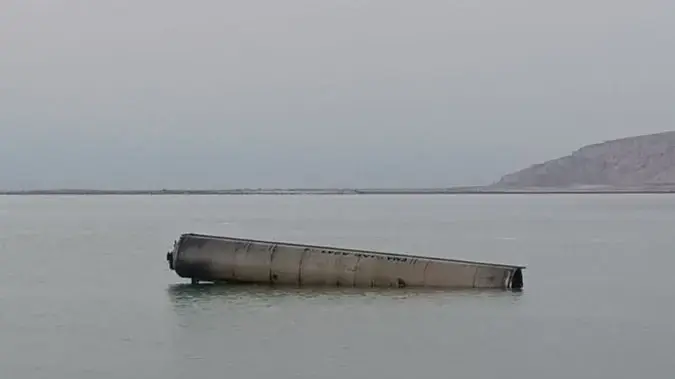The future is made of brick.
But also made of iron, concrete, aluminum and cable, a lot of cable.
The planet is accelerating its transformation and updating its infrastructures, mainly those related to mobility, telecommunications and energy, fundamental elements that will make it possible to build a new world: one that is more sustainable, more digital and, above all, resistant to the whims of the great energy powers.
“We are experiencing a global renaissance in infrastructure spending,” says Werner Richli, a fund manager at Credit Suisse bank.
Projects and money are not lacking.
The governments of the member countries of the G-20 have already allocated, in the last year, more than 3.2 billion dollars to different programs, which is equivalent to 4.6% of the gross domestic product (GDP) of all those nations on the whole,
according to the Global Infrastructure Hub.
Three have been the protagonists: the United States, the European Union and China.
More information
Prepared for disasters to come
"Everyone has shifted priorities and put forward long-term spending plans in an effort to fuel and sustain the post-pandemic recovery," said Steve Brice, chief investment strategist at Standard Chartered Wealth.
This financial firm forecasts that combined spending on infrastructure in the US, China and Europe over the next decade will be monumental: from $4.9 trillion to $6 trillion.
The world's largest economy last year approved an investment of 1.2 trillion dollars to build a more resilient country, a sustainable economy and eliminate carbon emissions from the electricity grid by 2035. In Europe, the NextGenerationEU plan has allocated 750,000 million euros in the same direction.
China, for its part,
A good part of the Chinese money will go to transport, works related to water and digital infrastructure.
Because when it comes to infrastructure, the Asian giant already has almost everything: more than twice the number of high-speed trains than the rest of the planet, as well as the longest highway network in the world.
Only around 30% of the new projects will correspond to traditional infrastructure (roads and railways).
More than half of the funds are geared towards supporting the manufacturing and service industries.
You still have to complete the coverage of your 5G network.
Its goal is to install more than 600,000 antennas by the end of this year, expanding the country's high-speed mobile network to two million operating units.
“All cities, as well as 87% of all rural centers, have 5G coverage,
which puts China at the forefront of the world,” Tian Yulong, a spokesman for the Chinese Ministry of Industry and Information Technology, said earlier this year.
“The country also has many projects planned to connect cities in all provinces.
To achieve a reduction in carbon emissions, you also need to build more solar and wind generators,” says Iris Pang, chief China economist at ING.
More information
Everyone wants a piece of the energy pie
And in those it is.
China, the largest emitter of greenhouse gases, has pledged to increase its wind and solar capacity to 1,200 gigawatts (GW) by 2030, which is double the current installation.
The Asian giant, which is also the largest coal producer on the planet, wants 33% of its energy to come from renewables.
Today, the percentage is 28.8%.
China is always in the forefront in all renewable pools.
It competes with the USA and India in the installation of photovoltaics and with Europe in wind and offshore wind power, which is advancing at full speed in the Old Continent.
After the energy crisis —unleashed in 2021 and which has worsened with the Russian invasion of Ukraine—, Germany, Belgium,
The need to search for new sources of energy has become a priority.
The European Commission has recently put on the table a plan endowed with 210,000 million euros so that Europe ends its dependence on Russian fossil fuels in 2027. The Commission has set itself the goal of installing some 300 GW of wind energy in the sea by 2050, compared to the approximately 16 GW currently installed.
In addition, he wants more solar roofs on public and commercial buildings, and some 10 million tons of hydrogen from renewable sources produced on the continent by 2030.
Solar panels in front of an old cement factory.
Clara Margais (dpa/picture alliance via Getty I)
Spanish privilege
The flood of resources for renewables is also reaching Spain, which has a privileged position: it is the eighth country on the planet in total renewable energy capacity and is at the forefront in photovoltaic energy (the fastest growing in the territory) and wind power .
Investors continue to bet on the Spanish market in renewables and maintain the country as the ninth most important economy to do business, according to the latest Recai 59 Report (Renewable Energy Country Attractiveness Index), by EY, which analyzes 40 markets.
The analysis evaluates the attractiveness of the countries in relation to investments and the sufficiency to deploy infrastructures.
The United States and China are in the lead in this report.
The advance in renewables in Spain has made a dent: last year they represented almost 50% of its electricity generation.
“Sustainability seems to be the common thread running through the new infrastructures,” says Jens Zimmermann, senior equity analyst at Credit Suisse.
But once the European Commission has classified nuclear energy and natural gas as transition fuels, investments in these two fields will also make their way, Zimmermann warns.
"The fact that the EU classifies nuclear energy and natural gas as transition fuels will have global implications for new investments in both energy sources," the analyst highlights.
The International Atomic Energy Agency (IAEA) has revised upwards its projections regarding the possible increase in nuclear capacity for electricity generation in the coming decades for the first time since 10 years ago, when the Fukushima Daiichi accident took place.
According to the new forecast, global nuclear generating capacity will double from 393 GW last year to 792 gigawatts by 2050. About 30 countries are considering turning to nuclear power plants again to generate electricity, according to the IAEA.
In Asia, some 34 reactors are under construction and some 15 in Europe.
Most of the capacity will be added in China, as the country is expected to approve six to eight new reactors a year under its 14th Five-Year Plan (2021-2025).
Beijing wants some 150 new conventional reactors in the next 15 years, more than the rest of the world has built in the last 35 years.
The plan may cost as much as $440 billion, according to Bloomberg, and if successful, the country will overtake the US by the middle of this decade as the world's largest nuclear power generator.
more than the rest of the world has built in the last 35 years.
The plan may cost as much as $440 billion, according to Bloomberg, and if successful, the country will overtake the US by the middle of this decade as the world's largest nuclear power generator.
more than the rest of the world has built in the last 35 years.
The plan may cost as much as $440 billion, according to Bloomberg, and if successful, the country will overtake the US by the middle of this decade as the world's largest nuclear power generator.
Today, around 440 nuclear reactors around the world provide more than a quarter of the energy on the planet.
In February of this year, in addition to the war in Ukraine, the President of France, Emmanuel Macron, announced the construction of six new generation nuclear reactors and will study the possibility of erecting another eight in the coming years.
The shift in strategy is profound.
Macron had promised to reduce the nuclear percentage of national electricity production to 50%, currently above 70%, which makes it the largest producer of atomic energy in Europe.
But it is not the only country that sees an opportunity in this technology.
Last July, the British Government authorized the construction of a new nuclear plant in the county of Suffolk, southeast of Great Britain,
with an investment of around 23,500 million euros.
For its part, in the US, the Biden Administration has established a $6 billion fund to help plant operators keep their reactors running.
You also see in this energy a prominent future.
Much of his nuclear research focuses on the development of small modular reactors (SMR) based on passive safety systems.
The US, through the Nuclear Power Assembly, has recently said that a combined 90 gigawatts of nuclear power could be added to the grid by 2050. That translates to about 300 new Small Modular Reactors (SMRs), according to Maria Korsnick, president and executive director of the Nuclear Energy Institute of that country.
“We have the innovation, we have the capacity, we have the ingenuity.
There is no reason why we can't bring these products to market."
US nuclear electricity generating capacity peaked at 102 gigawatts in 2012, when there were 104 nuclear reactors in operation.
Today, the 92 operating reactors, with almost 95 gigawatts of capacity, provide 19% of the electricity.
More than 70 SMR designs are under development around the world, the IAEA says.
Nuclear energy returns to the fore and aims to be key in the ecological transition, but above all it will play a determining role in the energy crisis.
"40% of nuclear power plants in operation [in the world] were built as a result of the last great energy crisis," says Rafael Mariano Grossi, director general of the IAEA, in an opinion piece published on the Forum's website. World Economic in May.
In this story, Spain will remain on the sidelines.
The Government continues with its plans to close the seven reactors, in five locations, between 2027 and 2035, and thus achieve a 100% renewable electricity system.
Germany is still thinking about it.
Europe's economic engine decided to abandon this technology in 2011, after the Fukushima disaster.
The three nuclear facilities it still has in operation are due to shut down in December, but the decision is on hold as concern grows that Russia will cut off gas supplies.
The nuclear facilities in this country generate enough energy to heat around seven million homes, or to cover just under 6% of the country's electricity needs.
“Europe is between a rock and a hard place”, says Lars Nitter Havro,
analyst at consultancy Rystad.
“Countries are willing to prioritize energy security in the short term.
In the longer term, however, we expect renewable energy to become the staple of the energy system,” she adds.
Meanwhile, European governments want to cushion the blow as winter approaches.
Viable alternatives to Russian gas are few.
Liquefied natural gas (LNG) terminals on the mainland are running at full capacity, Norway (the main producer of fossil fuels in the area) exports as much as it can, and imports from Azerbaijan and Algeria have limited room for improvement.
New projects or some forgotten ones have been dusted off in the face of the emergency.
“In Europe alone, 22 LNG projects have been identified that have been announced, proposed or reactivated since February 2022 [when the Russian invasion began],” says Greig Aitken, an analyst at Global Energy Monitor.
Some countries are also investing in new terminals to import gas.
The Italian giant Eni, for example, announced that it will develop a liquefied natural gas plant in the Republic of Congo with a capacity of three million tons per year.
Without going any further, in Spain, Enagás will disburse more than 4,700 million until 2030 for the construction of three new international interconnections between Spain and France, with Italy and with Portugal.
“We are convinced that these infrastructures are going to be built,
An essential piece
The infrastructure related to energy is perhaps the most important piece in the puzzle of the new world, because it will give meaning to the new mode (more electrified) and will give life to new technologies such as 5G, which is advancing at a slow pace.
The percentage of the population covered by 5G in Europe has almost doubled in 2021, reaching 62% compared to 30% the previous year.
But it is far behind other economies such as South Korea, with 93.9% coverage, or the US, with 93.2%, according to data from ETNO (European Telecommunications Network Operators), the association of main European operators.
The fragmentation of the continental market (where some 38 operate, while in Japan there are 4 or in the US 7), as well as excessive community regulation, hinders investment capacity, they emphasize from ETNO.
In the last decade, according to an analysis by Axon, the European sector has invested some 500,000 million euros in the development of its networks.
But an additional investment is still required for the deployment of the entire 5G network and fixed network with fiber optics in Europe.
Boston Consulting Group estimates the amount to be disbursed in the coming years at around 300,000 million euros.
In Spain there are about 10,000 million euros to be invested to have new generation networks available throughout the country, according to estimates made by Orange.
Some 7,000 would correspond to investments to deploy 5G, 2,000 million to finish covering Spain with FTTH (fiber to the home) and an additional 1,000 to complete the 4G deployment.
Of the total, some 4,000 million would be difficult for the companies in the sector to afford, with a turnover that has been reduced by a third in the last decade, although telephone and internet traffic has multiplied by 20. “Therefore, they would need help to be viable”, claim sources from the French company.
The operators insist that part of the resources to extend the infrastructure would have to come from the large content providers, those companies known as Over The Top (OTT), which dominate 56% of network traffic and are Meta (Facebook , Instagram, WhatsApp), Alphabet (Google Search, YouTube), Apple (iTunes, iCloud, AppStore), Amazon (AWS, Amazon Prime), Microsoft (MS Office, Xbox) and Netflix, according to Axon.
"These large traffic generators must pay for a service for which they have not paid until now: the transport of the traffic they generate in the networks of the telecommunication operators until they reach the users' homes", underlines Juan Montero, director of Public Policies, Competition and Regulation of Telefónica.
The current and operational model, says the expert, was created in the 1990s,
with an internet without large companies, and based on web pages.
"The debate is whether, 30 years later, that model is still the best for users, and for the entire ecosystem," he concludes.
A worker in the new factory of the Catalan company Wallbox, which is listed on the New York Stock Exchange and is dedicated to the design and manufacture of chargers for electric cars.
Quique Garcia (EFE)
Smarter and more sustainable cities
A car connected to (almost) everything.
But not only to the web, but also to the electrical outlet.
In the next 10 years, large cities will have to adapt to the growing demand for electric vehicles.
Credit Suisse analysts forecast the global EV penetration rate to be 45% by 2030, a jump from 4.5% in 2020. Last year alone, electric car sales reached 6.6 million units, more than triple the number in 2019, according to the International Energy Agency.
China (with 3.4 million units) and Europe (with 2.3 million) were placed in the first positions.
At the end of 2021 there were about 16.5 million of these cars.
All of these vehicles will require significant development of charging infrastructure in large cities, homes and public places.
Bloomberg New Energy Finance (BNEF) estimates that around 300 million charging stations will be needed around the world by 2040, mainly for public and home charging.
In Europe, up to 6.8 million public charging points are required by 2030, in order to achieve CO₂ reduction targets, according to the European Automobile Manufacturers Association (ACEA).
For this, it is necessary to install, throughout the European territory, up to 14,000 public charging points per week in the remainder of this decade and an investment of 280,000 million euros.
The challenge is enormous.
Currently, according to ACEA, there are some 307,000 chargers in Europe, but two countries have almost half of them: the Netherlands (90,000) and Germany (60,000).
In fact, the Dutch alone have as many chargers as 23 Member States put together.
“While some countries are making progress when it comes to infrastructure deployment, most are lagging behind,” says Eric-Mark Huitema, CEO of ACEA.
Spain is close to 12,000, which is triple what it had three years ago.
"There is a high demand at recharging points," says Eduardo García, director of operations at Ibil, a firm that manages some 500 public charging points in the country.
But this is only one leg of the new sustainable infrastructures that are expected in the future and that will have a boost thanks to European funds, which include nearly 80,000 million in non-reimbursable transfers, explains Concha Santos, president of the National Association of Unlisted Construction Companies (ANCI).
The Recovery, Transformation and Resilience Plan that distributes these funds places construction as one of the six priority sectors, and the National Construction Confederation estimates that 7 out of every 10 euros will be directly or indirectly related to the sector.
“The recovery plan thus recognizes the key role of infrastructure in each of the three dimensions of sustainable development: the economy, the environment and society.
All in all, through these transfers we will only be able to cover part of the accumulated investment deficit since the 2008 crisis″, highlights Santos.
For the Association of Construction Companies and Infrastructure Concessionaires (Seopan), European funds do not constitute a public investment plan and, therefore, their drive and contribution to promote the infrastructure that the country needs is very moderate.
Of a total of 51,098 million euros of subsidies allocated in the State Budgets for 2021 and 2022, just 10.2%, 5,222 million, is for public infrastructure, while, for example, in Italy, it represents close to 50% ,
According to the latest diagnosis carried out by Seopan and Sener engineering, the most urgent investments detected in Spain to meet the objectives of the 2030 Agenda represent more than 243,000 million euros, which would have to go to waste treatment and purification projects, infrastructures public transport (commuter and metro), the conventional rail network and intermodal transport stations to promote rail freight transport.
"We are far from seeing a boom in infrastructure issues," says a source from one of the country's large construction companies who asks not to be cited.
“We are at a time when there is a lot of money in the stock market.
We see various projects, but none is having an immediate effect”.


/cloudfront-eu-central-1.images.arcpublishing.com/prisa/XUSHBFNUIJNE7CMWAZBLGTBEEU.jpg)












